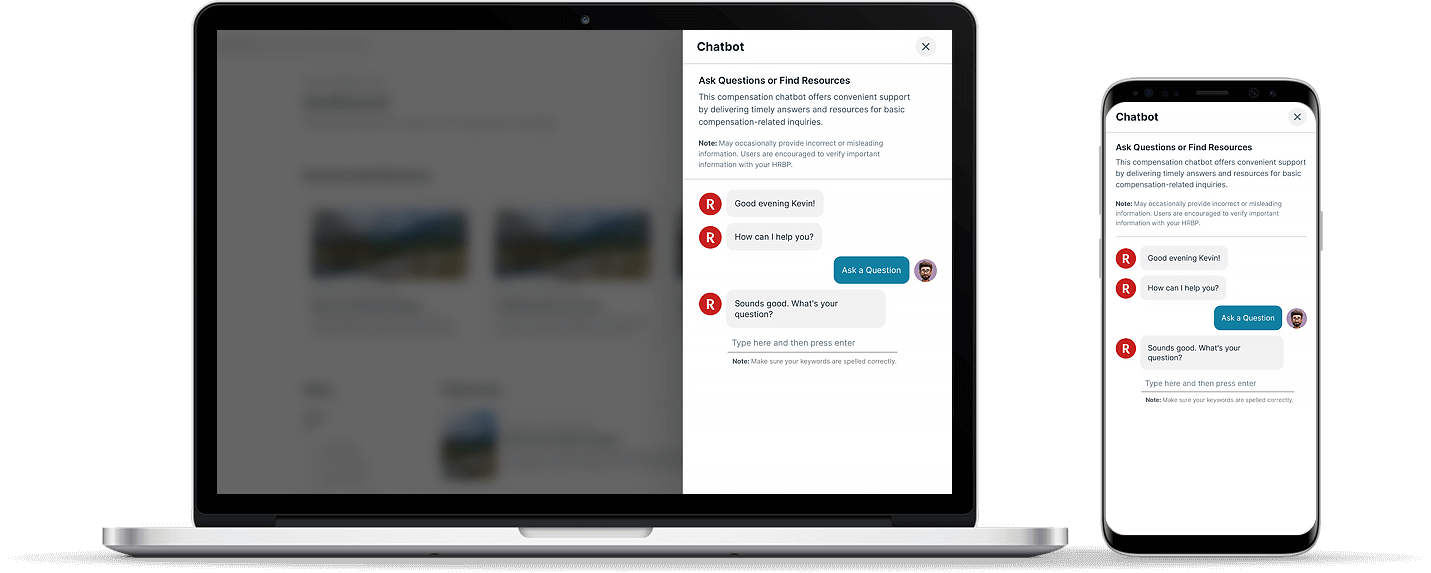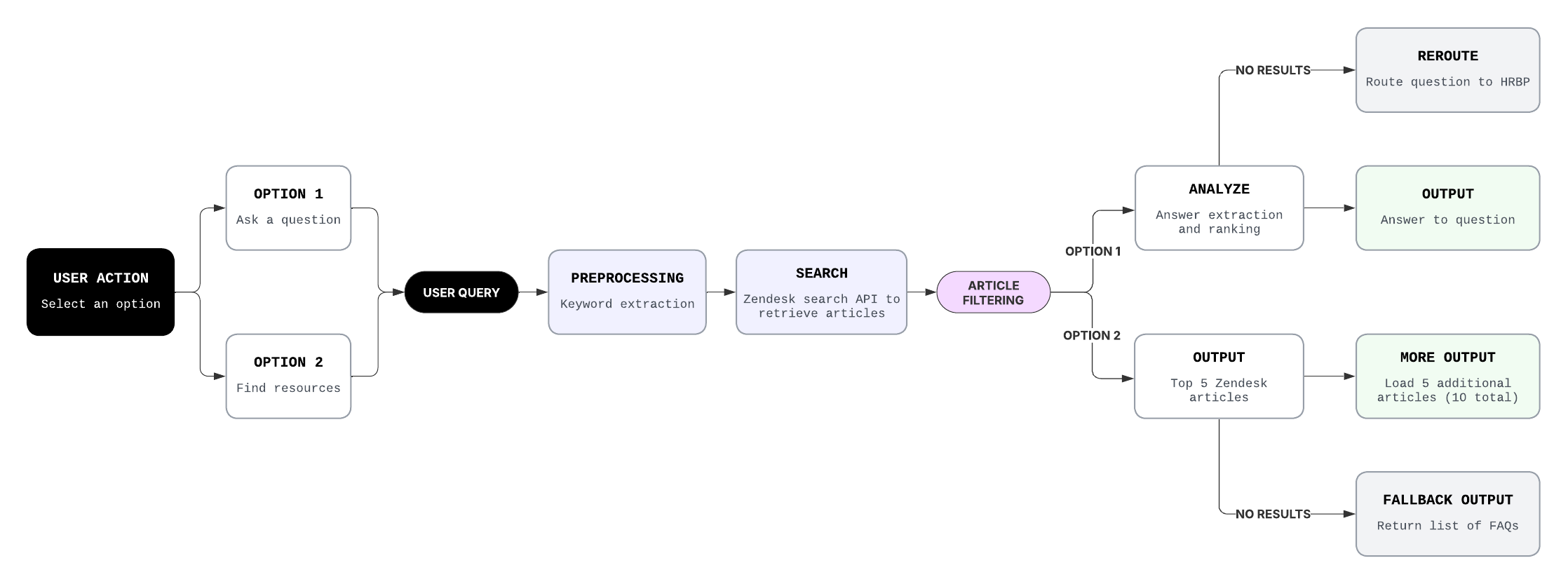Project Overview
Redfin uses Zendesk as our internal knowledge management system, but with over 5,000 articles, employees struggled to find relevant information quickly. This issue was especially evident during the annual performance cycle when HR was overwhelmed with basic compensation questions.
To address this, I developed a self-service chatbot as a pilot to streamline access to compensation-related information. By providing instant answers and directing employees to key resources, the chatbot improved accessibility while freeing HR to focus on complex issues.
ROLE
UI/UX Designer, Interaction Designer, and Front-End Developer
TIME
2 Weeks
KEY CONTRIBUTION
Designed and developed a cost-effective chatbot using HTML, CSS, JS, and Zendesk APIs to efficiently deliver answers and resources.
IMPACT
Implemented a self-service chatbot that reduced compensation-related help desk tickets by 50%, enabling employees to independently access resources and find answers to common questions—minimizing reliance on their manager and HR.
Challenges
Without a budget to use AI APIs for processing incoming data and generating responses, the chatbot faced significant technical limitations. Redfin has over 5,000 intranet articles in Zendesk, which made it difficult to surface the most relevant answers and resources. Additionally, without a backend system for feedback collection and model training, tracking inaccuracies and refining responses over time was challenging.
Solutions
Technical Limitations:
Used Zendesk's Search API (included in our plan) to leverage built-in AI for returning the most accurate and relevant results.
Implemented keyword extraction techniques (stopword removal, named entity recognition, TF-IDF, tokenization) using front-end JavaScript libraries to improve query interpretation.
Filtering Through 5,000+ Articles:
Focused the search only within the compensation category, reducing the article count to fewer than 100.
Sorted results by upvotes to prioritize the most helpful and relevant articles.
Filtered outdated and unverified articles to ensure accuracy.
Lack of a Backend for Feedback Collection:
Leveraged Zendesk’s article upvote/downvote system as a way to validate whether the surfaced articles were helpful, using it as a proxy for feedback.
How It Works
I integrated Zendesk’s Search API with front-end keyword extraction techniques to interpret user queries. To refine results, I limited searches to the compensation category, prioritized highly upvoted articles, and filtered outdated articles to ensure accuracy and relevance.
Returning Answers:
To extract the most relevant answer from an article, I assigned weights to keywords in the user’s query and performed a fuzzy keyword search across all article content. Each sentence in every article was scored based on keyword matches, and the highest-scoring sentence(s) was returned as the most relevant answer. A link to the full article was also provided for users who wanted more details.
Returning Resources:
Since Zendesk’s Search API already applies AI to return the most relevant results, I simply cleaned up query inputs to enhance accuracy. The chatbot then returned the top 5 articles, ensuring users had quick access to the best available resources.
Compensation Chatbot
Empower employees with a convenient, self-service chatbot for instant answers and resources on compensation—saving time for both them and HR.
This is a real recording of the chatbot in action, showcasing the actual user experience—not a mockup or simulation.
Reflection
Despite significant technical limitations and no additional budget, I pushed the boundaries of innovation by optimizing existing tools and designing a strategic self-service chatbot. By leveraging front-end NLP JavaScript libraries and existing platform APIs, I created an intuitive solution that reduced compensation-related help desk tickets by 50%.
Moving forward, I’m eager to explore more advanced AI models, such as retrieval-augmented generation (RAG) and large language models (LLMs), to deepen my understanding of AI-driven support systems. If the opportunity arises, I would love to experiment with these technologies to enhance response accuracy, improve contextual understanding, and create more dynamic, explainable AI solutions.
BEYOND THIS PROJECT
HR Quick Support
The compensation chatbot was so successful in improving access to information that HR wanted to expand it to cover all HR-related questions. To explore this idea, I designed a high-fidelity coded (HTML, CSS, JS) prototype showing how a self-service HR support tool could work. While it wasn’t developed due to other priorities, it provided a clear vision for a scalable HR support model.
It follows the same approach as the compensation chatbot to retrieve answers and resources.


